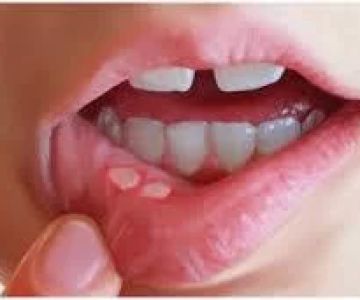What Are Gum Ulcers?
Gum ulcers are small sores that form on the gums and other areas inside the mouth, such as the lips, tongue, inner cheeks, or roof of the mouth. These ulcers can be caused by various factors, and they may have different characteristics and effects on your oral health.
Types of Mouth Ulcers
There are several types of mouth ulcers, with canker sores being the most common. Other types include oral lichen planus, leukoplakia, erythroplakia, oral thrush, and in rare cases, oral cancer. Canker sores usually have a white or yellow center with a red border and can be triggered by minor trauma, acidic foods, or stress. Oral lichen planus is an immune system response that mostly affects women over 50. Leukoplakia causes white or gray patches due to excess cell growth, often associated with smoking or chewing tobacco. Erythroplakia, which is more likely to be precancerous or cancerous, presents as red patches. Oral thrush is a fungal infection caused by an overgrowth of yeast, often following antibiotic treatment or when the immune system is weakened. And oral cancer lesions can appear as persistent red or white sores or ulcers.
Symptoms and Causes of Gum Ulcers
The symptoms of gum ulcers are often easy to notice. They typically have a red border around a white, yellow, or gray center. You might have just one ulcer or multiple ones. Other symptoms may include swelling around the ulcers, increased soreness when brushing your teeth, and intensified pain when consuming spicy, salty, or sour foods. The causes of gum ulcers can range from minor tissue injury during dental work or accidentally biting your cheek or tongue, to allergic reactions, hormonal changes, stress, lack of sleep, vitamin deficiencies, viral, bacterial, or fungal infections, and underlying autoimmune diseases like Crohn's disease, celiac disease, reactive arthritis, lupus, or Behçet's disease.
Diagnosis and Tests for Gum Ulcers
A healthcare provider can diagnose gum ulcers through a visual examination. In severe cases or when a specific health condition is suspected, blood tests might be ordered to determine the underlying cause.
Management and Treatment of Gum Ulcers
While most gum ulcers heal on their own, your provider may prescribe medications to alleviate discomfort. Common treatments include antiseptic gels or mouth rinses, steroid ointments, and immunosuppressants in severe cases. You can also take steps at home to relieve symptoms, such as drinking plenty of water, maintaining good oral hygiene, rinsing your mouth with warm saltwater, using a hydrogen peroxide and water mixture, avoiding hot and spicy foods until the ulcer heals, and applying over-the-counter topical anesthetics.
Prevention of Gum Ulcers
Although it's impossible to completely prevent gum ulcers, you can reduce your risk by brushing your teeth twice daily and flossing once daily, using a soft-bristled toothbrush to avoid tissue irritation, eating a healthy diet rich in fresh fruits and vegetables, visiting your dentist regularly for checkups and cleanings, and treating any underlying conditions that may cause sores.
Outlook and Prognosis of Gum Ulcers
In most cases, gum ulcers go away on their own within 10 to 14 days. However, if a mouth sore persists for longer than three weeks, it's advisable to schedule an appointment with your healthcare provider. They can recommend appropriate treatment and help you get rid of the ulcer.
Living With Gum Ulcers
If you have mouth sores that last for three weeks or longer, new sores that appear before the old ones heal, mouth ulcers that affect the outer part of your lips, pain that doesn't improve with medication, unusually large mouth ulcers, painless mouth sores, fever, or diarrhea, you should contact your healthcare provider. It's also important to ask your provider questions such as why you keep getting mouth ulcers, if an underlying condition is causing them, how to reduce your risk, what mouth ulcer medicine they recommend, and if there are any necessary changes to your diet or lifestyle.
Common Questions About Gum Ulcers
There are some common questions regarding gum ulcers. For instance, the difference between a mouth ulcer and a canker sore is that a mouth ulcer is a broad term encompassing any sore inside the mouth, while canker sores are the most common type. Canker sores can be caused by deficiencies in folate, vitamin B, or iron, but often occur without a clear cause and may recur. Mouth ulcers that don't heal within three weeks could indicate underlying health conditions. Usually, mouth ulcers aren't a sign of cancer, but a persistent mouth ulcer could potentially be a sign of oral cancer, especially if it appears on or under the tongue. Most mouth ulcers are harmless but can cause significant inconvenience and pain. If a mouth ulcer doesn't heal within two weeks, you can try over-the-counter medications and home remedies to ease the pain. If it persists beyond three weeks, consult a healthcare provider as you might have an underlying condition that requires treatment.
In conclusion, gum ulcers are a common oral health issue that can cause discomfort and inconvenience. Understanding their types, causes, symptoms, diagnosis, treatment, prevention, and prognosis is crucial for managing and dealing with them effectively. By taking proper care of your oral health and seeking timely medical attention when needed, you can minimize the impact of gum ulcers on your daily life and ensure a healthy mouth.



 Aspen Dental - State College, PA3.0 (637 review)
Aspen Dental - State College, PA3.0 (637 review) The Smile Spot Independence Dentistry for Kids & Orthodontics3.0 (185 review)
The Smile Spot Independence Dentistry for Kids & Orthodontics3.0 (185 review) Everlast Family & Cosmetic Dentistry4.0 (217 review)
Everlast Family & Cosmetic Dentistry4.0 (217 review) Washington Square Dental4.0 (121 review)
Washington Square Dental4.0 (121 review) Soundview Denture Clinic5.0 (50 review)
Soundview Denture Clinic5.0 (50 review) Baseline Dental Care | Dentist In Rialto4.0 (387 review)
Baseline Dental Care | Dentist In Rialto4.0 (387 review) The Importance of Oral Health Education During Pregnancy for a Healthy Pregnancy
The Importance of Oral Health Education During Pregnancy for a Healthy Pregnancy Best Tips for Brushing Your Teeth Properly for Healthy Gums: Essential Techniques for Oral Health
Best Tips for Brushing Your Teeth Properly for Healthy Gums: Essential Techniques for Oral Health Why Skipping Dental Checkups Can Lead to Bigger Oral Health Problems
Why Skipping Dental Checkups Can Lead to Bigger Oral Health Problems Advantages of Porcelain Dental Restorations
Advantages of Porcelain Dental Restorations How Can Diabetes Cause Tooth and Gum Problems? Preventing and Managing Oral Health Issues
How Can Diabetes Cause Tooth and Gum Problems? Preventing and Managing Oral Health Issues Healthy Habits for Promoting Good Oral Health and Hygiene: Tips for a Healthy Smile
Healthy Habits for Promoting Good Oral Health and Hygiene: Tips for a Healthy Smile